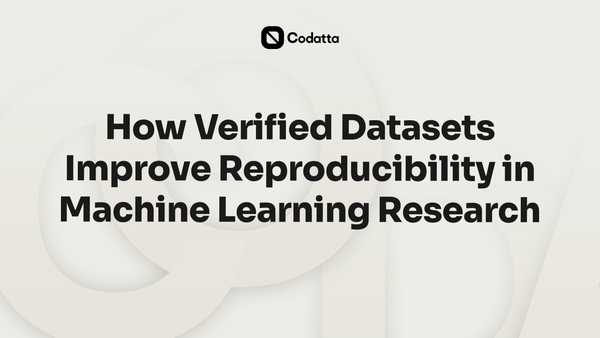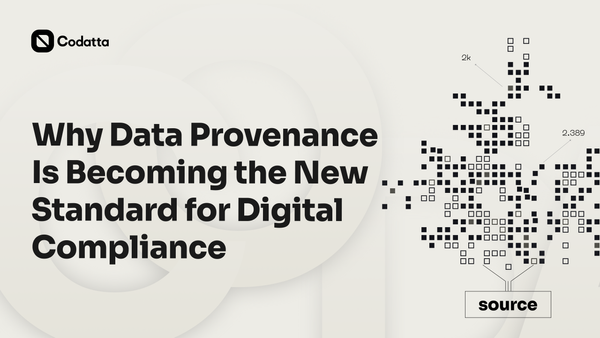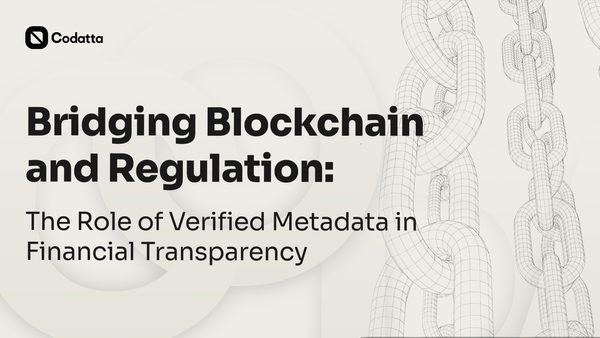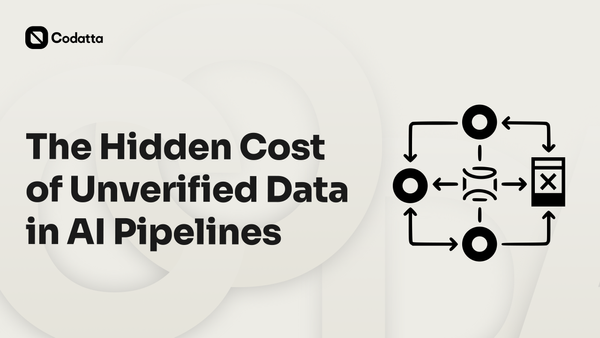The Economics of Verifiable Data: Reducing Costs in AI and Compliance Workflows
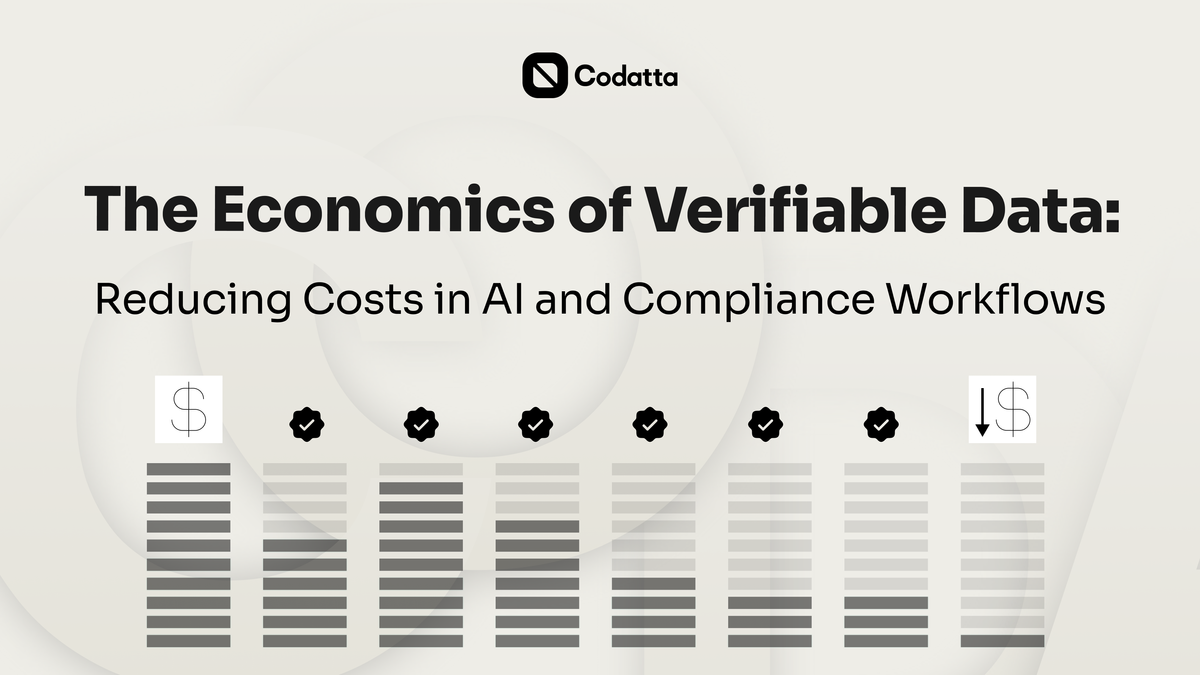
AI systems now power compliance, automation, and analytics across nearly every sector, but the data behind them carries a high price. Each artificial intelligence model depends on massive datasets that need constant validation, cleaning, and retraining to stay accurate. When data lacks structure or traceability, teams spend more time fixing errors than improving performance.
Reports from McKinsey (2024) and the OECD Data Governance Principles show that poor data quality increases operational costs, delays automation, and adds layers of regulatory risk. Inefficient workflows, duplicated records, and unverifiable datasets drain resources that could support real innovation.
This article looks at how verifiable data and provenance-driven systems can cut costs, streamline audits, and make AI-powered compliance more reliable.
Read on to see how verified information helps organizations reduce costs, strengthen regulatory compliance, and accelerate operational efficiency in 2025.
The Hidden Costs of Unverified Data
Unverified, inconsistent, or duplicated data inflates storage, compute, and audit effort. AI-driven pipelines stall as teams redo data prep, patch gaps, and retrain models. Routine tasks pile up, operational costs rise, and cost savings disappear.
Lack of clear lineage forces repeated checks across the same data sets. Predictive analytics degrade, real-time decisions slow, and regulatory requirements become harder to meet. Auditors ask for evidence, engineers rebuild context, and leaders lose confidence in results.
Verifiable inputs change this picture. Provenance and validation let teams track data across each step, confirm accuracy, and standardize reviews. Machine learning workflows stabilize, predictive outputs improve, and automation starts to deliver measurable cost reduction. Organizations leverage the use of AI for risk management, streamline analytics, and reclaim budget once lost to rework.
Why Verifiable Data Reduces Cost and Risk
Verifiable data means structured and traceable information that includes visible provenance, validation history, and contributor records. Each dataset shows where it came from, who verified it, and what rules or standards were used. This structure gives organizations a single source of truth across their operations, reducing confusion and errors in AI training, compliance reviews, and automated decision-making.
In AI-driven workflows, unverified information often leads to duplicated checks, repeated audits, and wasted compute time. Verifiable data eliminates this redundancy by maintaining data integrity across every step of the process. It supports workflow automation, improves efficiency gains, and reduces labor costs associated with manual data cleaning or revalidation. For financial services and enterprise AI systems, this translates into lower compliance costs and faster, more accurate audits.
When provenance and validation are built into every record, AI algorithms can process large volumes of information without re-verifying data or triggering false alerts. This improves auditability, prevents compliance violations, and ensures that automated systems meet established regulatory requirements. Verifiable data also helps detect anomalies early, strengthening fraud detection and risk management across supply chains and digital transactions.
The FATF and EU AI Act (2024) both highlight traceable and structured data as essential to compliance across AI applications and intelligent automation systems. These frameworks encourage organizations to adopt AI responsibly, maintain compliance in high-risk AI use cases, and build trustworthy systems that meet modern data protection and reporting standards.
By integrating verifiable data into AI platforms and compliance processes, companies reduce operational costs, avoid repeated validation cycles, and gain a competitive advantage in how they deploy and manage AI solutions. It allows enterprises to utilize AI to automate routine checks, analyze large datasets, and identify potential compliance risks in real time, improving accuracy, maintaining compliance, and driving sustainable efficiency across business operations.
Codatta's Economic Impact: Data Provenance at Scale
Codatta introduces a decentralized way to structure and verify metadata across digital systems. It focuses on making data traceable and reusable so that teams can avoid duplication and automate verification instead of repeating manual checks. Each record in the network includes clear provenance, validation details, and contributor information, creating a foundation for accuracy across data-driven operations.
Codatta does not train AI models or handle financial transactions. Its purpose is to provide the validation layer that keeps information consistent, auditable, and ready for reuse in AI-driven automation and compliance workflows. This structure allows organizations to integrate AI tools more efficiently, without wasting resources on redundant data validation or repeated quality reviews.
With verifiable metadata in place, companies can process large amounts of data with less compute power and fewer manual interventions. The result is measurable cost reduction and smoother workflow performance across analytics, reporting, and audit cycles. Codatta’s framework supports long-term data integrity and reliability, helping organizations gain efficiency while managing the real economic impact of AI at scale.
Real-World Use Cases
AI Training Pipelines
Verified datasets improve AI training pipelines by reducing redundant retraining and improving fine-tuning accuracy. Codatta’s provenance-based structure ensures every dataset used for model development carries transparent validation and traceable origin. This approach helps data scientists and engineers maintain consistent quality across training cycles, lowering compute use and improving reliability across AI-driven automation.
Compliance and Audit Workflows
In compliance operations such as AML and KYC, verified metadata makes it possible to automate audit trails and verification without handling personal or sensitive data. Codatta’s protocol structures the validation layer that allows institutions to confirm that information has been reviewed and approved through transparent provenance records.
This improves accountability across internal workflows and helps organizations maintain compliance assurance without duplicating checks or adding manual review steps.
Enterprise Data Management
Enterprises that manage large volumes of data face growing storage and processing costs. Codatta’s traceable and reusable data records help organizations reduce duplication, preserve data integrity, and streamline internal analytics workflows. With reliable provenance built into every record, teams can move data efficiently across departments and tools while maintaining accuracy, transparency, and long-term usability.
Conclusion: Turning Data Integrity into Economic Value
Verifiable data changes how organizations handle both compliance and automation. Instead of repeating audits or retraining models, teams can rely on transparent, traceable information that stays consistent across systems. This shift turns data management into a measurable source of efficiency and accountability.
Codatta provides the infrastructure that makes this possible. Its protocol structures and validates metadata so that information remains reliable, reusable, and audit-ready at scale. Through this foundation, enterprises can maintain transparency while reducing operational costs and improving long-term reliability.
The future of data economics will belong to systems that can prove their integrity, not those that simply move larger amounts of data.

